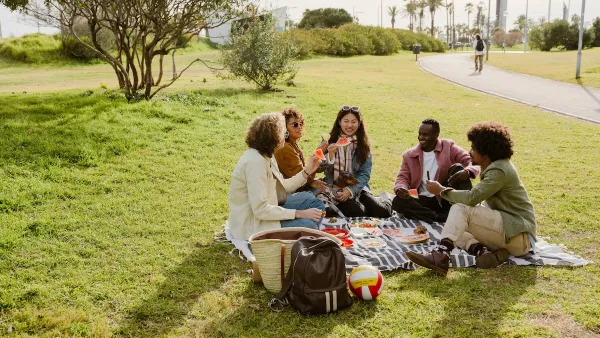I have to admit, listening to Peter Lovenheim talk about his book “In the Neighborhood, The Search for Community on an American Street, One Sleepover at a Time”, spiked my planner’s radar. In his novel, the journalist, quite intentionally, well, the title is self-explanatory isn’t it? It sounded a bit hokey and contrived at first, as did the interview. Lovenheim explained that the only way to truly get to know someone and develop a real sense of intimacy and bond was to sleep in their home and shadow them for the day. But the real story is about the loss of intimacy and comfort among neighbors.
I have to admit, listening to Peter Lovenheim talk about his book "In the Neighborhood, The Search for Community on an American Street, One Sleepover at a Time", spiked my planner's radar. In his novel, the journalist, quite intentionally, well, the title is self-explanatory isn't it? It sounded a bit hokey and contrived at first, as did the interview. Lovenheim explained that the only way to truly get to know someone and develop a real sense of intimacy and bond was to sleep in their home and shadow them for the day. But the real story is about the loss of intimacy and comfort among neighbors. Lovenheim's quest to understand why people who share the same street are unable to share anything else about themselves is actually a reflection of how our neighborhoods are designed and laid out.
A fellow blogger last month wrote that drawing ability was not a prerequisite for being a planner. But understanding spatial relationships certainly is. Lovenheim's neighborhood is a picturesque curving and undulating street, with stately homes which are set far back from the street. The house on the hill design had decreased opportunity for neighbors to casually meet and interact so Lovenheim quite deliberately befriended a handful of people, and matched them together to form a traditional unit of neighbors who could depend on each other through challenging times, what sociologists and planners referto as creating social capital.
What was most interesting to me was that almost all of the neighbors on Lovenheim's street had an intense need to be part of a community and a social network, but they didn't have the facilities to achieve it. One neighbor observed that public spaces have largely been privatized into commercial spaces. Think about the coffee shop, king Starbucks, bookstores. These are little self-contained units with a small entry fee. Another neighbor contrasted American neighborhoods to African tribal villages whose homes are traditionally organized around acentral space out of a primal need for survival. She observed that American neighborhoods are designed for privacy to fuel the prevailing ideology that we can survive alone. And then she suggests the antidote to this landscape of isolation parks! Brilliant.
We obviously can't retrofit our neighborhoods to the tribal village model, or wait for a creative type to take it upon himself to bring the neighbors together one sleepover at a time, but we can introduce more central spaces, parks, playgrounds, community gardens to our neighborhoods.

Planetizen Federal Action Tracker
A weekly monitor of how Trump’s orders and actions are impacting planners and planning in America.

Map: Where Senate Republicans Want to Sell Your Public Lands
For public land advocates, the Senate Republicans’ proposal to sell millions of acres of public land in the West is “the biggest fight of their careers.”

Restaurant Patios Were a Pandemic Win — Why Were They so Hard to Keep?
Social distancing requirements and changes in travel patterns prompted cities to pilot new uses for street and sidewalk space. Then it got complicated.

Platform Pilsner: Vancouver Transit Agency Releases... a Beer?
TransLink will receive a portion of every sale of the four-pack.

Toronto Weighs Cheaper Transit, Parking Hikes for Major Events
Special event rates would take effect during large festivals, sports games and concerts to ‘discourage driving, manage congestion and free up space for transit.”

Berlin to Consider Car-Free Zone Larger Than Manhattan
The area bound by the 22-mile Ringbahn would still allow 12 uses of a private automobile per year per person, and several other exemptions.
Urban Design for Planners 1: Software Tools
This six-course series explores essential urban design concepts using open source software and equips planners with the tools they need to participate fully in the urban design process.
Planning for Universal Design
Learn the tools for implementing Universal Design in planning regulations.
Heyer Gruel & Associates PA
JM Goldson LLC
Custer County Colorado
City of Camden Redevelopment Agency
City of Astoria
Transportation Research & Education Center (TREC) at Portland State University
Camden Redevelopment Agency
City of Claremont
Municipality of Princeton (NJ)






























